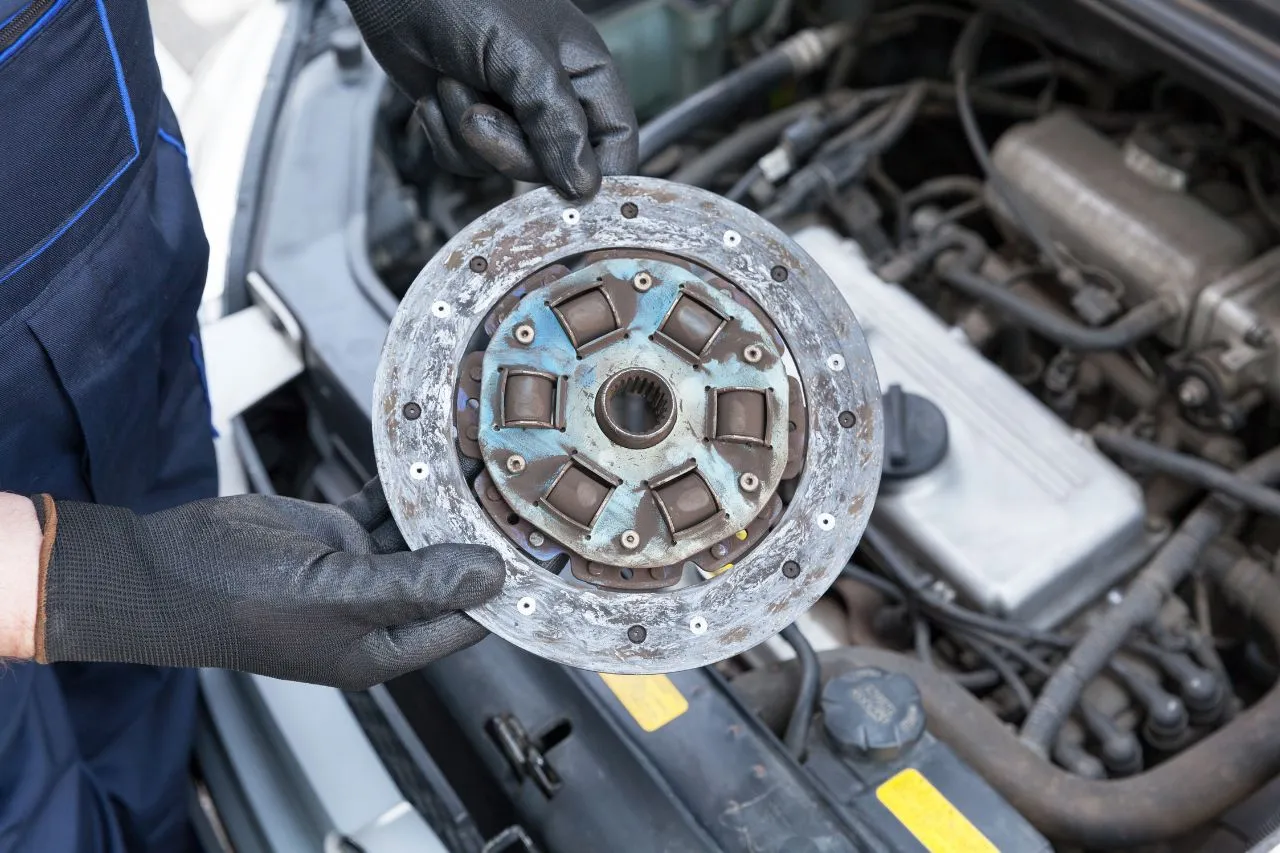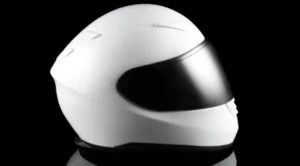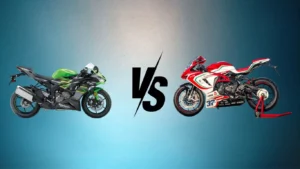Ever found yourself revving the engine on your beloved motorcycle, only to experience that maddening feeling of a sticky clutch? It’s like the universe is conspiring against you, isn’t it? Why does this happen, you might ask. Well, my fellow riders, you’re in the right place!
Understanding why your motorcycle clutch sticks can feel like deciphering a complex mystery. But don’t worry, we’re about to unravel this enigma. In the following sections, we are going to delve deep into the possible reasons behind clutch sticking and, more importantly, how you can fix it. Ready for the ride? Hop on!
Symptoms of a Sticking Clutch
Your motorcycle clutch is like your trusty sidekick. It’s always there, ready to assist you in changing gears and controlling your speed. But what happens when your sidekick starts acting up? What if your clutch starts sticking? Let’s face it, that’s a situation no one wants to be in. But don’t worry, we’ve got your back. Let’s first identify the tell tale signs that your clutch is sticking:
Difficulty in Changing Gears
Does it feel like you’re wrestling with your motorcycle every time you try to change gears? If so, a sticking clutch might be the culprit. A clutch that’s functioning properly should allow for smooth gear changes. If that’s not happening, it’s time for some detective work.
Increased Engine Revs
Is your bike’s engine revving more than usual without an increase in speed? This could be a sign of a sticking clutch. When the clutch sticks, it can’t engage the transmission properly. This leads to the engine working harder than it needs to, resulting in higher revs.
Stuck Clutch Lever
If your clutch lever refuses to return to its normal position after you’ve released it, you’re likely dealing with a sticking clutch. This is one of the most obvious signs and needs immediate attention.
Odd Noises When Using the Clutch
Motorcycles, much like everything else, have a distinct sound. And we’re not talking about the beautiful purr of your engine. If you hear clicking, grinding, or squeaking when you use the clutch, it’s a sign that something’s off.
Remember, your motorcycle speaks to you through the sounds it makes and the way it behaves. Your job is to listen and understand what it’s trying to say. Could it be saying, “Hey, check my clutch!”?
7 Most Common Causes of Clutch Sticking
Have you ever jumped on your motorcycle, ready for a ride, only to find that the clutch is sticking? It’s quite a bummer, isn’t it? But don’t worry; we’ve got you covered. There are several reasons why this could be happening, and we’re going to explore each one along with its fixes.
1. Not Enough Clutch Fluid
Ever wonder why your motorcycle clutch might be sticking? One likely suspect could be the lack of sufficient clutch fluid. The fluid acts as a lubricant and ensures the smooth functioning of your clutch system. Without an adequate amount, the clutch might start to stick, making your rides less enjoyable and potentially unsafe.
How to Fix:
- Start by checking the level of clutch fluid in the reservoir. If it’s low, this might just be the root of your problem.
- Top up the fluid to the recommended level. Remember, different bikes may require specific types of fluids, so it’s always best to consult your bike’s manual or a trusted mechanic.
- If the problem persists, then it might be an indication of a more serious issue like a fluid leak, which needs immediate attention.
- Note: Always ensure to use the right type of clutch fluid as specified in your motorcycle’s manual. The wrong type can cause damage to the clutch system.
2. Clutch Cable Problems
Ever tried to shift gears on your mean machine, only to find the clutch sticking like an obstinate child refusing to budge? Yeah, we’ve all been there. But what could be causing it? A likely culprit is the clutch cable.
So, what’s up with the clutch cable?
It’s the lifeline that connects your hand lever to the clutch mechanism inside the gearbox. In simpler words, it’s the messenger carrying your command to change gears to the clutch. A problem here can cause your clutch to stick.
Now, you’re probably wondering, “What kind of problems could afflict my clutch cable?” Well, let’s dive into that, shall we?
- Wear and Tear: Just like everything else in life, your clutch cable isn’t immune to wear and tear. If it’s old or overly used, it could cause the clutch to stick.
- Lack of Lubrication: Imagine trying to slide down a dry slide. Pretty rough, right? That’s exactly how your clutch cable feels without proper lubrication.
- Incorrect Adjustment: Too tight or too loose, if your clutch cable isn’t adjusted just right, it can make your ride a whole lot more frustrating.
Now that we’ve identified potential issues, you’re probably itching to know how to fix them. Fret not, we’ve got your back!
| Problem | Solution |
|---|---|
| Wear and Tear | Simply replace the cable. It’s something you can do at home if you’re mechanically inclined, or you can take your bike to a professional. |
| Lack of Lubrication | Lubricate the cable regularly with a good quality cable lubricant. It’s an easy job that will keep your clutch running smoothly. |
| Incorrect Adjustment | Adjust the clutch cable as per the manufacturer’s specifications. It may take some time to get it just right, but the difference it makes is worth it. |
In short, a well-maintained clutch cable can make or break your riding experience. So, here’s to smoother rides and hassle-free gear shifts!
Your clutch lever connects to the clutch via a cable. If this cable is damaged, frayed, or simply out of adjustment, it could cause your clutch to stick.
- Fix: Inspect the cable for any damage. If it’s frayed or damaged, you’ll need to replace it. If it’s out of adjustment, you can adjust it yourself or get a professional to do it.
3. Worn Out Clutch Plates
Imagine this: You’re out on the open road, the wind in your hair, the roar of your bike beneath you. Suddenly, you notice something’s off. Your motorcycle clutch is sticking. Darn! One of the potential culprits behind this issue could be your motorcycle’s clutch plates. But why would they cause such an inconvenience? Let’s break it down.
In the heart of your motorcycle’s engine, within the clutch assembly, there are multiple friction plates. These clutch plates are designed to engage and disengage the engine from the drivetrain, allowing you to shift gears smoothly. Think of them as the unsung heroes of your motorcycle experience.
Understand this, without those clutch plates doing their job efficiently, you’d have a sticky situation on your hands, literally!
Now, you might be wondering, What happens to these plates over time? Well, like all heroes, they can wear out too. Clutch plates are subject to extreme heat and friction during their lifetime, which can lead to a decrease in their thickness. As a result, they no longer provide the necessary grip, causing the clutch to stick.
- Fix : It might seem daunting, but sometimes, the solution is as simple as replacing the worn-out clutch plates. Here’s how you can check if your clutch plates are worn out:
- Firstly, inspect the clutch plates for any visible wear or damage. If the plates are worn beyond the manufacturer’s recommended limits, it’s time to replace them.
- Secondly, check if the clutch plates are sticking together. The plates should move freely when the clutch lever is pulled. If they’re sticking, it could be due to worn-out clutch plates.
Remember, maintaining your motorcycle’s clutch is crucial for a smooth and hassle-free ride. Don’t let worn-out clutch plates come between you and your love for the open road!
4. Clutch Basket Grooves
There’s a high chance that your motorcycle clutch is sticking due to the formation of grooves in the clutch basket. Yet, you might wonder, How does this happen?
As we ride on, the clutch plates in your motorcycle’s clutch basket rub against the basket’s fingers. Over time, this friction results in the formation of grooves. The more severe these grooves, the more the clutch plates stick to the basket, leading to the dreadful clutch stick.
Want to check if this is the culprit? You’re in luck! You can easily inspect this by removing the clutch cover and examining the basket for visible grooves.
Note: Remember to ensure your motorcycle is off and cooled down before attempting any inspections or repairs. Safety first!
Fix : So, what’s next if you find grooves on your clutch basket? Well, let’s take a look at a couple of fixes:
- File the Grooves: If the grooves are not too deep, you can file them down using a flat file. Make sure to file evenly to avoid creating flat spots or misalignments. This fix, however, is temporary, as grooves may reappear over time.
- Replace the Clutch Basket: If the grooves are too deep or if filing doesn’t improve the situation, it might be time to replace the clutch basket. This is a more reliable and permanent solution, but it also comes at a higher cost.
In the long run, routine inspections and maintenance can help prevent the formation of these grooves. And remember, fellow rider, your ride is only as good as the care you put into it.
5. Clutch Spring Problems
Ever wondered why your motorcycle clutch might be sticking? It may well be down to the clutch springs. You might not give these little components much thought, but they play a crucial role in the smooth operation of your clutch system.
So, what’s the deal with clutch springs?
When in good working order, these springs apply pressure to the clutch plates, allowing them to engage and disengage properly. This ensures a smooth transition as you shift through gears. However, if they wear out or break—which they can from regular use and high rpm riding— your clutch will likely stick as it struggles to disengage properly.
Remember, the little things can make a big difference in your overall riding experience. Clutch springs are the unsung heroes of gear shifting.
Fix : One of the simplest ways to address a stuck clutch could be by adjusting the clutch cable. If it’s too tight, it can cause the clutch to stick. Try loosening it slightly and see if the problem persists. If it does, we may need to explore other possibilities.
6. Clutch Hub Wear
Picture this, you’ve been tearing down highways and cruising country roads for years now with your trusty companion, your motorcycle. With every adventure, your clutch hub, the heart of your clutch system, has been constantly engaging and disengaging, allowing the engine to smoothly transfer power to your bike’s drivetrain. But did you know that, over time, this regular wear and tear can lead to your clutch hub wearing out?
When the clutch hub wears out, it often causes the clutch to stick. This can be a real party pooper, right? But how can you tell if your clutch hub has worn out? Well, one sign is if you notice that your motorcycle is not able to shift gears smoothly, or if it slips out of gear. If you notice these signs, chances are, your clutch hub might just be waving the white flag.
Remember, a worn-out clutch hub can cause irregular clutch engagement, resulting in your motorcycle’s clutch sticking. It’s vital to keep an eye out for any signs of wear and tear to prevent further damage.
Fix : Regular maintenance is your first line of defense against a sticking clutch. Regularly clean and lubricate your clutch cable to ensure it’s operating smoothly. This can significantly reduce the chances of slippage or sticking, offering a smoother ride overall. Who wouldn’t want that, right? Now, if the clutch continues to stick, it could mean that your clutch plates are worn out.
Swapping the worn-out clutch plates for new ones usually solves the problem. But remember, it’s a task best left to professionals unless you’re comfortable with motorcycle mechanics. Always remember, safety first!
7. Dirty Clutch
Have you ever wondered what could be causing your motorcycle’s clutch to stick? If you’ve been riding your bike for a while, one cause might be a dirty clutch. Yes, you heard right. Just like your favorite pair of jeans, your motorcycle’s clutch can get grimy with use.
Over time, clutch plates can accumulate dirt and debris, affecting their ability to slide smoothly. This can lead to the annoying sticking sensation you’ve been experiencing. But don’t worry, we’ve got your back!
Regular Lubrication
One of the prime culprits behind a sticking clutch is lack of lubrication. Have you ever wondered why your clutch might feel crunchy or sticky? More often than not, it’s because it’s crying out for some lubricant.
- Make sure to lubricate the clutch cable and lever pivot points regularly. A dry mechanism increases the chance of stickiness and other related issues.
- Remember to use a lubricant that’s specifically designed for motorcycles. They’re engineered to withstand extreme conditions, ensuring your clutch operates smoothly, even during those adventure-filled rides.
Fix: Start by checking the clutch lever for any signs of excessive play or friction. If it’s too loose, tighten it. If there’s friction, apply a lubricant. You might also need to adjust the clutch cable or replace worn-out parts. Always consult your motorcycle manual or a professional for precise instructions.
Check for Wear and Tear
How often do we disregard the signs of wear and tear, assuming them to be minor glitches? However, when it comes to your clutch, even the smallest wear can lead to stickiness.
- Examine your clutch for any signs of wear or damage. If you notice any, it’s time to replace those components.
- Keep an eye on your clutch cable. Any frays or kinks can lead to a sticky clutch. Regular inspections and timely replacements can save you a world of trouble later on.
Adjust Your Clutch Regularly
Did you know that an improperly adjusted clutch can also lead to stickiness? Here’s how you can avoid it.
- Firstly, ensure that there is a small amount of free play in the clutch lever.
- Secondly, check the clutch cable adjustment. This should be done in accordance with the manufacturer’s specifications.
- Finally, ensure that the clutch is fully engaging and disengaging. If not, you might need to adjust the clutch cable.
A pro tip here: When adjusting your clutch, be patient and meticulous. Take your time to get things right. After all, the spirit of motorcycling lies in embracing the journey, not just rushing towards the destination, right?
Following these maintenance tips will not only keep your clutch sticking at bay, but also enhance the overall performance of your motorcycle. So, let’s roll up our sleeves and give our beloved bikes the care they deserve.
Conclusion:
Well, we’ve taken quite a journey together, haven’t we? Unraveling the intricacies of your motorcycle clutch, understanding why it might be sticking, and even learning how to fix it. But the journey doesn’t stop here. Remember, a smooth-operating clutch is not just a luxury, it’s a necessity for safe, effective riding. So, let’s summarize all that we’ve learned, and let’s always keep an eye out for those warning signs, shall we? After all, it’s not just about the ride, it’s also about the rider, isn’t it?






